Last week, it was revealed that Sir Jeremy Heywood, the most senior civil servant in the country has been called in to carry out an emergency review into HS2 ahead of the official Project review, with a view to try and cut costs from the project. There are several issues we feel he should look into very seriously, as they call in to question not only the competence of HS2 Ltd but also the overall viability of the project, and most of them impact on the cost.
Costs
It has been stated in both Houses of Parliament that the increase in estimated costs to £55.7bn in the 2015 Autumn Statement was due to inflation, simply updating the costs from 2011 prices to 2015 prices. However, when the breakdown of costs was released under FOIA, it became clear that this is not the case. Whilst construction estimates have increased, contingency costs have been cut, in what seems to be an attempt to keep overall cost inflation down. The strangest change in costs is that both the estimate and contingency concerning that as yet unspecified rolling stock was cut.
Whilst all the changes to the HS2 Hybrid Bill brought in via Additional Provisions in the Commons Committee process had been announced at the time of the 2015 Autumn Statement, it is unclear as to whether their estimated additional cost of £1.3bn (2011 prices) was added to the overall costs.
Of greatest concern is that real-world factors do not seem to be taken into account. For example, it was reported in 2015 that rail construction wages had risen by 74% in three years, a factor which does not seem to have been incorporated into the cost forecasts. Limited capacity in the signalling supply chain is another factor which should surely impact the reliability of cost estimates, but does not seem to have been accounted for. Whilst Crossrail has been able to prevent budgetary inflation with a similar descoping exercise, in reality the biggest factor was the ability to squeeze contracts at the height of a global crash.
Whilst it is understood that the cost of construction is the focus of this review, there are significant issues concerning the running costs of HS2. The first issue is the passenger forecast for the service. It is the case that all over the world, high speed rail lines do not achieve the passenger forecasts used to justify their construction. For example, last year HS1 celebrated hitting the mark of 10 million passengers per year, but the original forecast was that passengers were expected to have been in excess of 25 million per year by then. The Public Accounts Committee were very clear that in respect to this issue, that the DfT have not learnt from the mistakes of HS1 when planning HS2.
Whilst HS2 is forecast to make a profit, Tokyo-Osaka and Paris-Lyon are the only high speed rail routes in the world to generate a profit. Failure to hit the forecast passenger numbers will have a significant impact in terms of the subsidy HS2 will require, and mean the project creates a continual addition to national debt. This issue must be investigated.
Another significant running cost will be the cost of electricity, but HS2 forecasts for energy price increases in the future suggest that after an initial increase, electricity prices will stay static for most of this century. This clearly needs to be investigated, as do the actual power requirements.
The official peak requirement for HS2, which we believe is a low estimate is 800MW, which put into context is half of the output of one of the planned Hinckley C reactors. We understand that HS2 Ltd have still not yet put in a request to National Grid for their power requirements. This should be investigated, and it must be asked if the required power generation and transmission infrastructure needed for HS2 should be incorporated into the official cost of HS2. It also seems to be the case that there is no cost for maintenance apparent in the ongoing cost of HS2.
There are additional costs associated with HS2 which seem to being kept off the books. These include the new approach to the HS2 solution as it crosses the proposed East-West line near Calvert, as it is clear more changes to HS2 will be made not via a further Additional Provision, but under a Railway Works Order. It is quite possible similar efforts may be made to shift these costs in other locations where HS2 interacts with other railways. A further example comes via an FOIA response, which states that the necessary upgrades to power lines and trackside equipment, needed to existing lines where ‘Classic Compatible’ HS2 trains will run on, will not come out of the HS2 budget, despite being a cost directly attributable to the HS2 project.
Another cost directly attributable to HS2 are the Barnett Consequentials. The Autumn Statement bizarrely shows that whilst Wales does not qualify, Scotland will. This seems to be the wrong way round, and the position of giving a payout to Scotland but not Wales is surely untenable.
Other issues surrounding costs appear throughout this paper.
Stations
It is without doubt that the current plan for Euston Station is the worst of the four HS2 Ltd have come up with, and that it was the planning equivalent of doing your homework on the bus to school, submitted at the last minute to prevent the committee process in the House of Commons from stalling. Besides increasing the construction timetable from eight years to sixteen years plus (the ‘plus’ being because HS2 Ltd admit Network Rail will have work to do to what is left of the station when they have finished, but there is no suggestion as to what this will entail, timescales or cost), HS2 Ltd have given no indication how much disruption will be felt along the West Coast Mainline, both as a result of disruption in terms of reduced platforms, but also the closure of ‘Line X’ into the station. This is a key piece of information which for reasons best known to HS2 Ltd has not been disclosed.
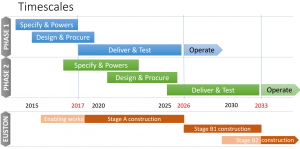
The current timetable for HS2 Euston works, which seem to contradict what the Government are saying about ’16 years’ of construction.
HS2 Ltd have seemed constantly reticent to move spoil out by train, instead sending trucks on to roads which already exceed air pollution limits. This is just one example of HS2 Ltd failing to understand the complexity of the issues in Camden which HS2 will impact on, instead tied to the flawed concept that Euston can become a regeneration area like Kings Cross/St Pancras, despite the fact those stations were bordered by one the largest brownfield sites in Western Europe.
As such, HS2 Ltd must be asked, why were they so quick to dismiss the ‘Double Deck Down’ proposal for citing HS2 Platforms under the current station, on a clearly flawed analysis? If the objective of the review is to significantly reduce costs, it is felt this could only realistically be done by removing the Euston link and terminating HS2 at Old Oak Common. Every other measure would be piecemeal in comparison. However, given that the proposed links to Heathrow and HS1 have already been trimmed from the project, if such a radical change were to be made, it would surely go further to damage the entire rationale for building HS2 in the first place.
It has recently been reported that the proposed station at Manchester Airport could potentially be cut in an effort to save costs. It had previously been suggested that the airport owners should be asked to contribute to the potential costs of this station, so it must be asked if this has happened, what has the outcome been, and additionally have there ever been similar conversations about a contribution to costs with Birmingham Airport?
It must also be mentioned that the station at Manchester Airport had previously been reported to be under threat because of the decision to add a new station at or near Crewe. Whilst this is supported by HS2 Ltd and Government, the latest cost forecast cost of £55.7bn does not include any costings whatsoever for the Crewe station. So if the imperative of the current review is to cut costs, what is the status of this uncosted promise?
The location of the majority of HS2 stations raises a significant question, what is the cost of connectivity? In continental Europe, it is almost exclusively the case that new high speed rail lines operate in the countryside, then converge onto existing lines when they approach cities so that they arrive in existing stations, with previously existing connectivity. HS2 does not do this, which is why there are so many expensive stations building up costs, some of which were mistakenly expected to become ‘cash cows’ at the start of project. It is also the case that HS2 does not have intermediate connections which could be provided with a more continental approach, delivering a far more useful outcome for far more people.
On top of this, because these proposed stations lack this existing connectivity, HS2 is not an integrated transport solution and needs additional expenditure to make it such. An example of this disconnectivity is the £1.6bn connectivity package proposed in the West Midlands, claimed to be needed to make HS2 work. Another obvious example would be the proposed station at Toton. This station neither serves Nottingham nor Derby adequately, and will need more rail investment, which is clearly meant to be ‘off the books’ as far as the HS2 budget is concerned, to make it work. It will also place exceptional pressure on an already highly congested part of the road network, which has not been considered at all by HS2 Ltd.
It surely has to be asked what the inevitable, inescapable costs of plumbing HS2 into the existing transport network are, and whether or not a solution resembling HSUK, which is far more similar to European rail networks in terms of routing, connectivity and speed, as well as being a far better fit with the ‘Kent Principles’ and reportedly cheaper, has ever seriously been considered.
Quite simply, the fundamental problem of HS2 is that from the start, for all the wrong reasons, it was decided the goal was to build a stand-alone railway with a design speed of 250mph, despite the very loud warnings given by Sir Rod Eddington in his study for the DfT about going down this path. This initial premise was fundamentally flawed on many different levels, but the attitude within Government has been that no criticism, no matter how constructive, could be tolerated from the point at which that decision was made. This is why we are where we are today, the whole concept was wrong from day one, but no-one has been willing to listen to the very clear warnings, or any suggestion to come up with something better.
Feasibility
The Sunday Times (8th May) has reported that within the scope of this review, there is the possibility that the current proposed station for Sheffield at Meadowhall will be scrapped, in favour of the line being swept East, with a spur line potentially coming in to the city.
This is no great surprise, as the route as proposed in that area always looked particularly challenging, before any attention to the ground conditions was taken into consideration. Whilst it has recently been reported by an engineer with decades of experience of the Meadowhall area that the ground resembles ‘mush’ and that it is the worst place to put such a station, we are not convinced these facts informed alternative route appraisals, rather that the imperative is to cut costs by removing a station, and the change in route is a by-product of this.
This is evidenced by the fact it is clear HS2 Ltd have paid little attention to completely inappropriate ground conditions elsewhere along the proposed route. The DfT have recently admitted in a Parliamentary Answer that ground condition surveys have still not taken place on the proposed route through the brine fields in Cheshire, an area where the engineers responsible for the construction of the M6 knew to avoid due to subsidence and the random appearance of sink holes. It is also the case that most of the ‘Phase 2b’ route is subject to mining subsidence, examples being along the route of the M42/A42 in Leicestershire, the area around Barnsley, and of course the area around Altofts and Woodlesford, which is already known for subsidence impacting on railway operations.
Given all this, the question that has to be asked is how did the HS2 cost update in the 2015 Autumn Statement lead to the Phase 2 contingency being significantly cut, if known factors which could clearly require contingency funding have still not been assessed?
On Phase 1, there is clear evidence that the potential impacts to the chalk lattice structure of the Colne and Misbourne Vallies have not properly been assessed, as evidenced by the assurance given to Affinity Water Ltd. It is clear that there are still outstanding questions relating to ground condition issues which have not be addressed and need answering.
However, there is a fundamental concern about the feasibility of the proposed scheme, whether or not the proposed speeds and service patterns are actually possible. The proposed speed of HS2 is faster than any railway in the world, and whilst the HS2 Ltd point to research undertaken by Herriot-Watt University regarding the potential effect of Rayleigh Waves, the results of this work are fundamental in determining both whether the proposed speeds are viable, and if it is what the required specification of track support would have to be. This research, concluded that the maximum safe speed on soft soil could be as low as 157mph. How this research impacts on options for the under-track support of HS2 and ongoing costs has not been made clear. If the data dictates that the running speed of HS2 has to be reduced, this would allow scope for wider bends in the track, avoiding sensitive sites and reducing running and maintenance costs.
Without knowing the recommendations of the Rayleigh Wave research, it is impossible to determine whether or HS2 will require slab track foundation or ballast, and therefore the noise levels which HS2 will produce. It has been assumed that HS2 will run on ballast, but if the effects of Rayleigh Waves dictate slab, noise levels will increase. During petitioning in the House of Commons, HS2 Ltd noise expert Rupert Thornley-Taylor admitted that the measure of noise being used to assess noise impact is incorrect, irrespective of the slab/ballast issue. It is important to note that in Germany, inadequate noise protection was provided alongside ICE train tracks, meaning noise levels exceeded statutory limits when trains became operational. The result was that noise barriers had to be retrofitted post-construction, at a significantly increased cost. The likelihood of the risk that this would have to happen with HS2 must be investigated.
Further to this, the levels of research which have taken place on other fundamental issues seems significantly lacking and levels of understanding exceptionally poor. One example of this was when Sir David Higgins appeared in front of the Transport Select Committee and stated that the faster the operating speed of a railway, the more trains it can fit. This is not the case, and whether or not 18tph has ever been feasible has never been evidenced. A recent review by Systra said that 18tph could be mathematically possible, but with little margin for error, and their review stated that they did not believe there would be enough paths available to fit the proposed service pattern at the Water Orton Junction, and an additional viaduct would be needed. This assessment from Systra was taken in isolation, not looking at the surrounding constraints of only some trains stopping Birmingham Interchange to the South, and the East/West split near Kingsbury to the North, so a further assessment including these factors must be conducted. Other facts which will be essential to establish are whether or not there is any evidence that the theoretical signalling and braking systems required are based in fact.
The Sunday Telegraph (15th May) has now reported that the link from Manchester to Crewe is under threat. Again, this is no surprise to us as many within the campaign have been of the opinion that if built, HS2 would only ever get to Crewe (without an eastern leg at all) due to the cost escalations which would have been encountered in completing Phases 1 & 2a, and that by that time the real cost of Phase 2b would be better understood.
With such radical measures on the table, it is surely now at least worth considering that HS2 was simply the wrong project from the start, and unlike what happened with HS1 in Kent, no opinion that something better than the original proposal could be achieved has ever been given any consideration. The stark reality is that now we have got to a point where it is seriously being considered that a faster journey from Wormwood Scrubs to Crewe is what the actual legacy of HS2 might be. It is surely time to conduct the assessment that never took place before HS2 was decided upon: “What is the best rail infrastructure solution to meet the UKs needs?”.
Environment
The assessment of environmental factors impacted by the project is woeful, as evidenced by significant and sizeable errors appearing in the Phase 1 Environmental Statement. The most significant in terms of potential cost increases is the assessment of water resources and flooding. The flooding assessment published as part for the ES in November 2013 relied on incomplete historical data, and whilst the associated information paper has been updated, the actual assessments it references have not.
It is clear in many areas that flooding has surpassed the supposed 1000 year flood level more than once in living memory. More worrying is the fact that after the ES was published, in February 2014 then Floods Minister Dan Rogerson admitted the scale of flood risk associated with HS2 had not been assessed. There is no subsequent updated flood risk assessment available in the public domain.
The overriding attitude of HS2 Ltd when it comes to flood risk seems to be that HS2 must not flood, but the effect of displacement away from the line is inconsequential. It is clear that assessments have not been based on any form of modelling, as there are examples where HS2 will drain miles of the track in to rivers and streams, some of which have been diverted, but assessments show this does not make any difference to the flood risk. This is clearly incorrect and must be investigated.
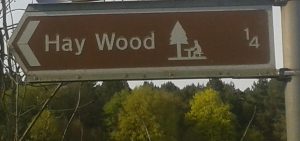
Yes, we know it’s spelled ‘Heywood’, but given the title of the article, we couldn’t not use this picture!
There are many other issues arising from the environmental statement, such as the future viability of habits due to severance and the lack of ‘green bridges’, however of most concern is why HS2 Ltd have cited ‘professional judgement’ as an excuse to bastardise the DEFRA biodiversity offsetting metric. This means they have been able to manipulate figures to achieve a result which suggests there will be no net loss of biodiversity, despite being specifically instructed by the Commons Environmental Audit Committee not to do this.
Communities
Many of the problems outlined above are as a result of the management and organisational culture of HS2 Ltd. This consequences of this attitude have been experienced in the worst possible way in the communities impacted by HS2. Three recent independent reports adequately evidence this:
In November 2015 the Parliamentary and Health Service Ombudsman, Dame Judy Mellor produced a report looking into complaints against HS2 Ltd. She concluded:
“I found that overall HS2 Ltd’s actions fell below the reasonable standards we would expect, so much so that they constituted maladministration.”
In March 2016, the Public Administration and Constitutional Affairs Committee produced a report following an inquiry into the attitude of HS2 Ltd. Despite the fact HS2 Ltd Chief Executive Simon Kirby had said when questioned that the company has learned their lessons and were improving things, Chairman of the Committee, Bernard Jenkin MP, said:
“There is still a culture of defensive communication and misinformation within this public body and that is not acceptable. Unless those responsible for delivering HS2 understand that first and foremost they serve the public, they will continue to be criticised for having complete disregard for the people, some of them vulnerable, who are impacted by this large-scale infrastructure project.”
Finally, in April 2016 Ian Bynoe, a former Independent Police Complaints Commissioner completed his independent report for HS2 Ltd. He concluded:
“Residents experienced administrative delay, prevarication, and a lack of candour about what the Company was willing or able to do and when. They encountered an unreasonable and unjustified defensiveness when they complained that the standard of response they were getting and its timeliness were unacceptable.”
“I can see that behaviours like this are influenced by the working culture and they can reflect the cues which staff receive from the top leadership, the organisation’s core values (stated or unstated) and its raison d’être, the working policies of the body and the extent to which resources have been matched to corporate objectives. HS2 Ltd is charged by Ministers with delivering a designed railway by a fixed deadline to a largely pre-determined budget.”
“It is about to acquire for the SoS legal powers to alter forever the ordinary lives of people “in the way of” the railway. It is not hard to envisage that, amongst the pressures and priorities of an organisation given this task, high quality community engagement may, from time to time, take second place and that performance of a consistently high standard will prove elusive.”
These conclusions are absolutely scathing, but the recent challenge to 414 petitions to the Hybrid Bill in the House of Lords, over half of the total which includes all the MPs who have petitioned, shows quite clearly that HS2 Ltd still have absolutely no interest in listening to the well founded concerns of residents impacted by HS2.
It is of severe concern that what are already almost impenetrable compensation schemes, will become harder to qualify for if there is a new imperative to cut costs. Communities are also concerned that mitigation proposals, which mostly already contain the go-to get-out caveat of ‘where reasonably practicable’, will be the first thing to go under a cost-cutting drive.
It has been suggested that tunneling which has been added since HS2 was announced can be cut in an attempt to cut costs, however the majority of tunneling has not been added to placate communities, but to remedy fundamental mistakes made in the original proposals. In the Chilterns, the initial tunnel extension to join up two planned tunnels, was done because engineers had admitted the original deep cutting proposed between them was unsustainable. The option to significantly reduce Chiltern tunneling is not a real option. Bringing significant parts of the line above ground through the designated Area of Outstanding Natural Beauty, would make a mockery of that designated status, but the gradients of the Chiltern Hills route make that impossible in most places, and it is even questionable whether or not the gradients in the tunneled sections are feasible.
Following the leak of the Chiltern Tunnel extension in 2011, we were regularly asked where else we thought other mitigation would come. Our standard response was Ruislip and Ealing. The Ruislip tunnel was indeed announced when the Phase 1 consultation results were officially published in 2012, but the Ealing one did not arrive for another year.
Quite simply, the Ruislip tunnel came about not out of any altruistic intention to mitigate impact the communities regardless of the cost, but because the overland proposal had far greater impact on the ongoing operation of the Chiltern Line and Central Line during construction than had been initially anticipated, and it was debatable whether or not the proposal as initially designed was even possible.
As for the Ealing tunnel, the initial overland proposal was quite frankly, bonkers, and it was quite frankly unbelievable that it was backed by the Department for Transport. The proposal included demolishing 18 road, rail and foot bridges in the area, with the construction timetable including three and a half years of roadworks on the A406 North Circular at Hangar Lane. It took three years for HS2 Ltd to accept that what they were proposing might actually be more expensive than building a tunnel, and that was before any costs of the associated road and rail disruption were taken into account.
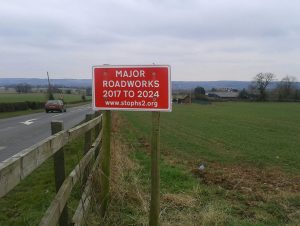 Along these lines, the recently added Lichfield short tunnel is pretty much cost neutral compared to the initial HS2 proposal. The original reason for rejecting the proposal was not that the tunnel would cost more, but constructing it would take longer.
Along these lines, the recently added Lichfield short tunnel is pretty much cost neutral compared to the initial HS2 proposal. The original reason for rejecting the proposal was not that the tunnel would cost more, but constructing it would take longer.
As for additional costs borne by communities, as the entire business case for HS2 is based on the concept that as ‘time is money’, economic benefit can be generated by going faster (despite the lack of connectivity to where people actually want to go), it is only reasonable to state that travel disruption caused by HS2 must be a cost of the project, at least in terms of the business case. No effort has been made to quantify the cost to the economy of road and rail disruption, despite the clearly massive implications of roadworks which include multitudes of crossings, closures and diversions to roads. Given that even major trunk roads and motorways are planned to be permanently diverted by HS2, this impact will be substantial, and many businesses will suffer loss of trade during construction. For example, the disruption due to happen around the proposed Birmingham Interchange station will directly impact upon the A452, A446, A45, M6 & M42, causing disruption similar to what was proposed in Ealing.
We hope you find these pointers useful during your investigations.

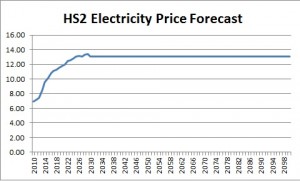
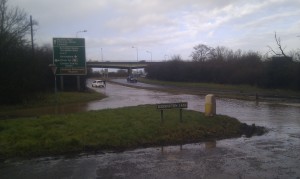
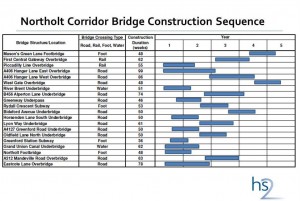
Seeing as nothing has so far stopped hs2 it seems to me that there should be much more exposure of the costs of schemes to connect to this line and also the services that will be cut from wcml
IMO this scheme needs to be scrapped. It will cause no end of short term pain for no gain at all.
Pingback: STOP HS2 | Wormwood Scrubs to a Field Outside Crewe: The Potential of HS2.
So,many thousands of people have suffered appalling treatment for a railway that joins Wormwood Scrubs and Crewe
If phase 2 doesn’t go ahead as described the whole wretched dead parrot MUST be scrapped
Are people questioning Camerons judgements on the HS2 and the referendum ahead. Has the nation the leadership to progress.
London Crossrail and daily commuter rail peak capacity are more important than the poorly planned scheme called HS2. Start again and determine what is needed where the route goes for affordable commuting and realise how small Euston is and use through platforms not end stops.